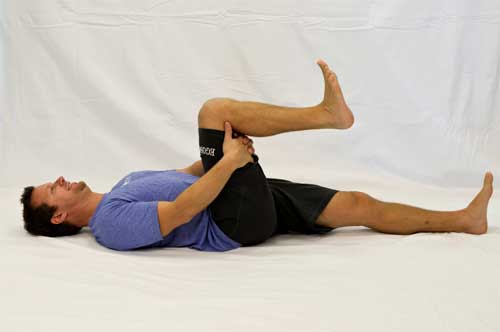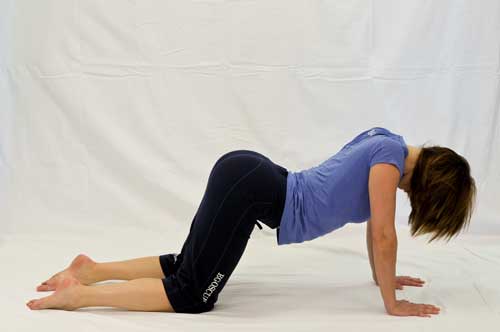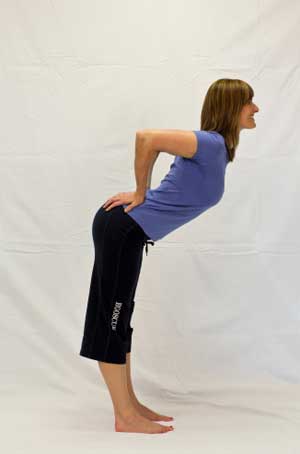ROD 052311
ROD
Monday, 23May11
Monday Mayhem
15 seconds work/15 seconds rest for 8 minutes at each couplet. Alternate between each exercise of each couplet.
Lower body work
- Kettlebell swings
- Goblet squats
Upper body work
- Kettlebell rows (alternating sides between sets)
- Push ups
Core work
- Med ball shin taps
- Med ball russian twists
_______________________________________________________________
Sitting All Day: Worse For You Than You Might Think
Posted By Dr Mercola
Even if you exercise regularly, it might not be enough to counteract the effects of too much sitting.
Many people have sedentary jobs and also engage in sedentary leisure activities after work, with the result that a lot more time is spent sitting than moving. A study calculated how much time a group of men spent sitting during an average day, and found that those who sat during the day were substantially more likely to die of heart disease.
According to NPR:
“Specifically … men who reported more than 23 hours a week of sedentary activity had a 64 percent greater risk of dying from heart disease than those who reported less than 11 hours a week of sedentary activity. And many of these men routinely exercised … [S]cientists are just beginning to learn about the risks of a mostly sedentary day.”
Sources:
As you likely know and understand I am a major proponent of exercise and believe it is absolutely essential if you are going to achieve any level of high-level health and wellness.
Exercise has been a lifelong passion of mine and I have been regularly exercising since 1968, over 43 years and counting now and I don’t ever plan on stopping till I exit this world.
It has been a journey as the first 25 years of my journey I am certain I caused some harm by overly focusing on aerobics and not understanding high-quality nutrition integration with exercise. Fortunately, I have learned much in the last ten years from some really amazing pioneers that has radically improved my health and hopefully many will seek to apply it to their own fitness programs.
What Did the Researchers Find?
The research linking too much sitting with increased risks of disease and premature death is quite eye-opening:
- Men who were sedentary for more than 23 hours a week had a 64 percent greater risk of dying from heart disease than those who were sedentary less than 11 hours a week, according to a 2010 study in Medicine & Science in Sports & Exercise.
- A study of more than 17,000 Canadians found that the mortality risk from all causes was 1.54 times higher among people who spent most of their day sitting compared to those who sat infrequently.
- Sitting time is a predictor of weight gain, according to a study of Australian women, even after accounting for calories consumed and leisure time physical activity, such as exercise time.
- The risk of metabolic syndrome rises in a dose-dependent manner depending on your “screen time” (the amount of time you spend watching TV or using a computer). Physical activity had only a minimal impact on the relationship between screen time and metabolic syndrome.
- People who use a computer for 11 hours or more a week, or watch TV for 21 hours or more a week, are more likely to be obese than those who use a computer or watch TV for 5 hours a week or less.
An editorial in the British Journal of Sports Medicine also highlighted much of the recent evidence linking too much sitting with biomarkers of metabolic health. They reported research showing sitting time correlates with an increased risk of type 2 diabetes, heart disease and other prevalent chronic health problems.
The “Active Couch Potato” Effect
Perhaps most potentially disconcerting about the health risks of sitting is that exercise does not appear to be enough to counteract its negative effects. This makes sense, really, as how could one hour of activity make up for 15 hours of sedentary ones (plus eight hours of sleep)?
Writing in a British Journal of Sports Medicine editorial, researchers state:
“Even if people meet the current recommendation of 30 minutes of physical activity on most days each week, there may be significant adverse metabolic and health effects from prolonged sitting — the activity that dominates most people’s remaining “non-exercise” waking hours.”
In other words, even if you’re fairly physically active, riding your bike to work or hitting the gym four or five days a week — you may still succumb to the effects of too much sitting if the majority of your day is spent behind a desk or on the couch.
Researchers have dubbed this phenomenon the “active couch potato effect.”
As written in the journal Exercise and Sports Science Reviews:
“We further examined relationships of TV time with continuous metabolic risk in men and women who reported at least 150 [minutes per week] of moderate- to vigorous-intensity physical activity — the generally accepted public health guidelines for health-enhancing physical activity.
Among these healthy physically active adults, significant detrimental dose-response associations of TV time were observed with waist circumference, systolic blood pressure, and 2-h plasma glucose in both men and women, as well as fasting plasma glucose, triglycerides, and HDL cholesterol in women only.
This observation — the Active Couch Potato phenomenon — is important.
The particular metabolic consequences of time spent watching TV are adverse, even among those considered to be sufficiently physically active to reduce their chronic disease risk. This finding reinforces the potential importance of the deleterious health consequences of prolonged sitting time, which may be independent of the protective effect of regular moderate-intensity physical activity.”
Can Too Much Sitting Drastically Increase Your Risk of Disease?
That is one of the reasons why I was intrigued with this study, but I am not convinced in the conclusion they reach and suspect more of it is related to the lack of optimal exercise than the actual act of sitting.
It is my belief that we all require some level of high-intensity exercise training, like the High Intensity Interval Training about twice a week or so and if we fail to incorporate this into our exercise program there will be negative health consequences. Since it is likely that far less than 5% of the population engages in this activity it is no surprise that this association was found.
Obviously there was not a group in this study that was compared using this form of exercise as it is not widely practiced or even appreciated among most researchers as different from traditional cardio type exercises.
Sitting is not intrinsically harmful — except when done incorrectly for long periods on a consistent basis. Your body simply wasn’t meant to be sedentary and numerous metabolic and other body processes are negatively impacted by long periods of inactivity.
So I simply do not accept the conclusions of these researchers, as everything I know and understand about exercise and health does not align with their controversial findings.
What Can You do to Reduce Your Sitting Time?
Having expressed my disagreement with this study there are still many changes you can make to minimize the impact of too much sitting. Clearly sitting is not something most of our ancient ancestors did so doing too much of it is likely to lead to problems. Unfortunately, most of us, including me, spend the majority of our day sitting.
One of the things I do to compensate for this is to spend about one hour or more every night lying on the floor doing an Egoscue exercise called the tower, which I reviewed in a recent article. It is a powerful simple structural movement that helps to realign my body posture and helps to radically compensate for the structural DE compensation that occurs as a result of sitting too much.
Simple Egoscue Exercises to Try Out
Following are four examples of Egoscue exercises that you can also use to help compensate for some of the damage caused by excess sitting. For more information about Egoscue, visit Egoscue.com or PatchFitness.com. You can also email painfree@egoscue.com with questions.
Foot Circles & Point Flexes
- Lie on your back with one leg extended and the other leg bent and pulled up toward your chest
- Clasp your hands behind the bent knee
- Keep the foot on the floor pointed straight up toward the ceiling
- Circle the lifted foot outward for the indicated number or repetitions, then reverse direction for the same number of reps
- For the point/flexes, bring the toes back toward the shin to flex, then reverse the direction to point the foot forward for the indicated number of reps
- Switch legs and repeat
- Repeat 40 times in each direction
Frog (2 minutes)
- Lie on your back with your arms at your side, palms up, and hands relaxed
- Place the soles of your feet together
- Relax your upper back and hips
Static Extension Position (2 Minutes)
- Start down on the floor on your hands and knees with your major joints aligned (i.e. shoulders directly above elbows and wrists, hips directly above knees)
- Hands should be placed shoulder width apart, palms flat with fingers pointed straight ahead
- Arms must remain straight, elbows locked
- Walk your hands about 6 inches forward and then move your upper body forward so that your shoulders are again above your hands but now your hips are forward of your knees about 6 inches
- Relax your low back allowing it to arch with the movement coming from the tilt of your pelvis
- Collapse your shoulder blades together and drop your head down
- Your shoulders should be directly above your hands
- If your low back begins to hurt, back your hips up toward your knees; this will make the exercise a bit easier
- Hold as directed on your menu
Standing Forward Bend (2 minutes)
- Stand with your feet pointing straight and hip width apart
- Place your palms on your low back/upper buttocks area
- Tilt your hips forward to place an exaggerated arch in your low back
- Pull your elbows and shoulder blades together and hold
- Now bend forward from the hips (NOT from your low back)
- Keep the low back arched as you bend over
- Tighten your thighs and shift the weight into the balls of your feet
- Hold as directed on your menu
5 More Tips to Try …
- Make sure you get up frequently. At least once every hour make sure you get up from your chair to stretch, march in place or take a quick stroll outside. Research shows that a larger number of breaks in sedentary time are associated with better metabolic profiles, including waist circumference and glucose metabolism. So anytime you are sitting, be sure you are breaking up the sitting time with frequent breaks.
- Use an exercise ball for a chair or a standing workstation. Unlike sitting in a chair, sitting on an stability ball engages your core muscles and helps improve balance and flexibility. You’ll also burn a few more calories as you keep the ball level than you would otherwise. Standing rather than sitting can also be a helpful option.
- Stay active throughout the work day. Walk around, pump out a couple minutes of squatting, do some stretching. Break up your sitting and avoid long stretches of unmitigated motionlessness.
- Stand when you can. Whenever possible, do your work standing instead of sitting. For instance, try putting your laptop on a high counter that you can access while standing, walk around your office while you’re on the phone, and communicate with your coworkers in person instead of sending an email.
- Cut back on your TV, video game and computer time at home. Make your leisure time as active as possible, as much as possible. Instead of lounging on the couch in the evening, play a game of hide-and-go-seek with your kids, take a yoga class, spend time cooking in the kitchen, or go for a walk around your neighborhood.
Remember, Exercise is Important
Remember to make your exercise time count by including very high-intensity sessions such as you get at NLP. You probably do this at least twice to three times a week at the least. You’ll also want to include exercises that really challenge your body intensely along with those that promote muscle strength, balance and flexibility.
Then, don’t just collapse on the couch after your workout. Challenge yourself to stay as active as possible even during your non-exercise hours to reach your highest level of health.





